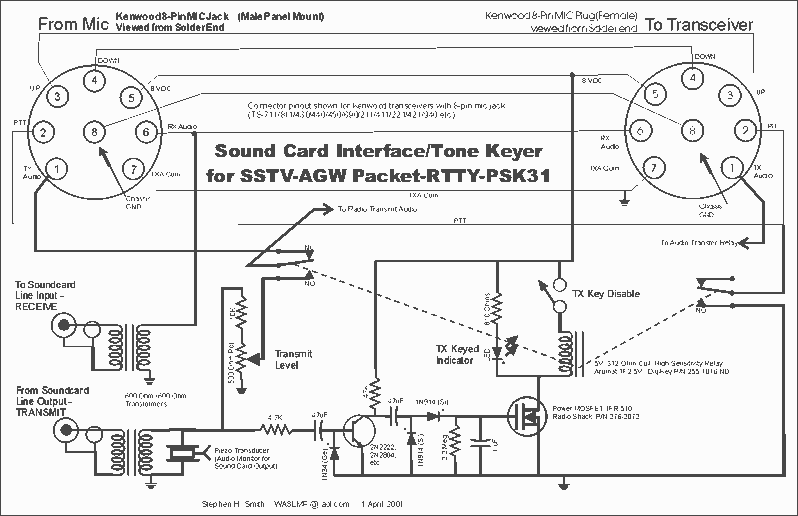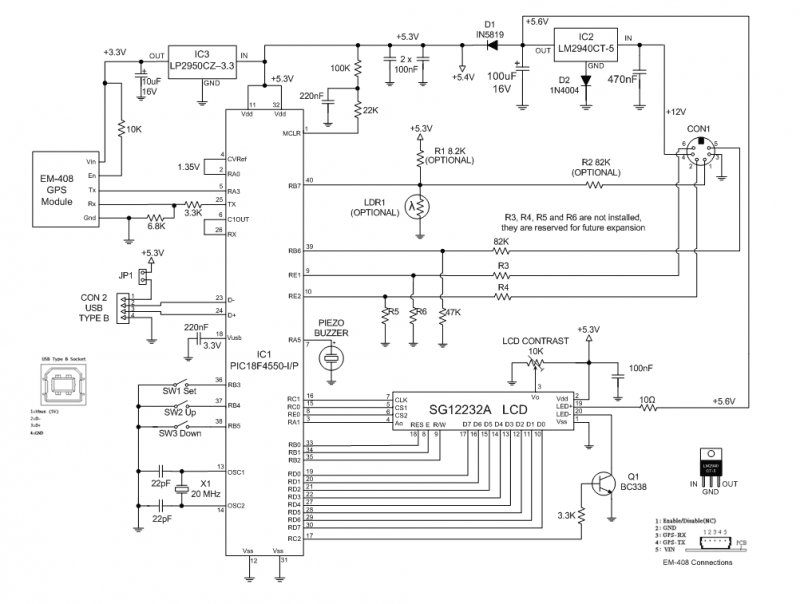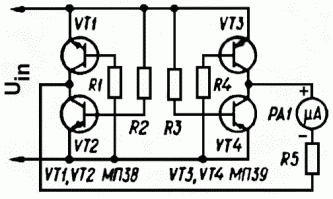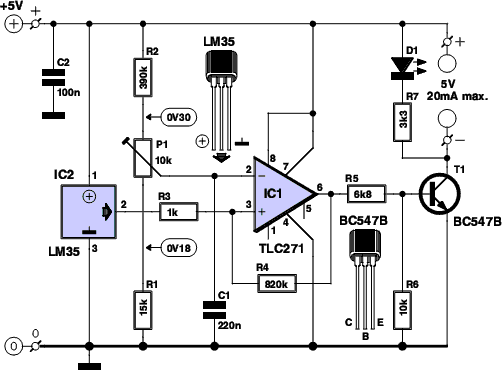
Voltmeter with LED for car battery PCB
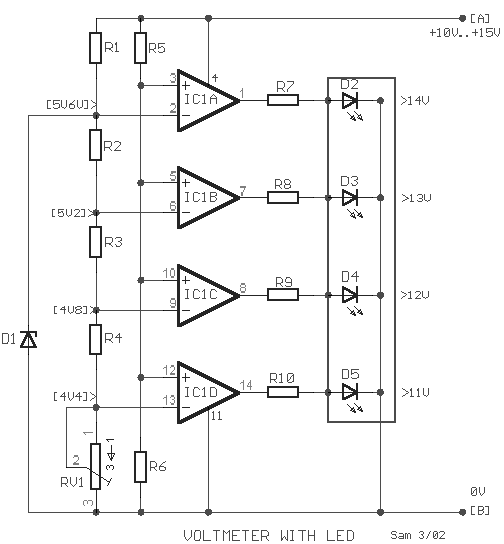
The circuit is a comparator that measures the voltage of a car battery in steps of 1 Volt. The voltage measurement is performed by comparing the battery voltage, applied to the inverting inputs of amplifiers, against reference voltages produced by a Zener diode (D1). The Zener diode is selected for its thermal stability. The variable resistor (RV1) allows for the adjustment of the desired voltage level. The output indication is provided by four LEDs.
The described circuit utilizes a comparator configuration to effectively monitor the voltage levels of a car battery. The comparator operates by comparing the input voltage from the battery with reference voltages derived from a Zener diode, which is known for its ability to maintain a stable voltage output across varying temperatures and load conditions. This stability is crucial for accurate voltage measurements.
The circuit design incorporates an adjustable resistor (RV1) that allows the user to set a specific voltage threshold. By rotating the variable resistor, the reference voltage level can be modified, enabling the circuit to be calibrated for different battery types or conditions. This feature enhances the versatility of the circuit, making it suitable for various automotive applications.
The output of the comparator is visually indicated through four LEDs, which light up in response to the battery voltage level. Each LED corresponds to a specific voltage range, providing a clear and intuitive visual representation of the battery's state. This setup allows for quick assessment of the battery condition without the need for additional measuring equipment.
Overall, the circuit's design emphasizes simplicity, reliability, and user adjustability, making it an effective tool for monitoring car battery voltage in real-time. Proper selection of the Zener diode and careful calibration of RV1 are essential for ensuring accurate performance and longevity of the circuit.The circuit, is a comparator, can measure with step of 1Volt, the voltage of battery of car. The clue of voltage become after comparison of voltage of battery, that is applied in the inverting inputs of amplifiers, with voltages of reference that are produced by a Zener D1, the value of which is such so that it present good thermic stability. With the RV1, we regulate the gradation of voltage that we want. The optical clue become from four Led. 🔗 External reference
The described circuit utilizes a comparator configuration to effectively monitor the voltage levels of a car battery. The comparator operates by comparing the input voltage from the battery with reference voltages derived from a Zener diode, which is known for its ability to maintain a stable voltage output across varying temperatures and load conditions. This stability is crucial for accurate voltage measurements.
The circuit design incorporates an adjustable resistor (RV1) that allows the user to set a specific voltage threshold. By rotating the variable resistor, the reference voltage level can be modified, enabling the circuit to be calibrated for different battery types or conditions. This feature enhances the versatility of the circuit, making it suitable for various automotive applications.
The output of the comparator is visually indicated through four LEDs, which light up in response to the battery voltage level. Each LED corresponds to a specific voltage range, providing a clear and intuitive visual representation of the battery's state. This setup allows for quick assessment of the battery condition without the need for additional measuring equipment.
Overall, the circuit's design emphasizes simplicity, reliability, and user adjustability, making it an effective tool for monitoring car battery voltage in real-time. Proper selection of the Zener diode and careful calibration of RV1 are essential for ensuring accurate performance and longevity of the circuit.The circuit, is a comparator, can measure with step of 1Volt, the voltage of battery of car. The clue of voltage become after comparison of voltage of battery, that is applied in the inverting inputs of amplifiers, with voltages of reference that are produced by a Zener D1, the value of which is such so that it present good thermic stability. With the RV1, we regulate the gradation of voltage that we want. The optical clue become from four Led. 🔗 External reference

